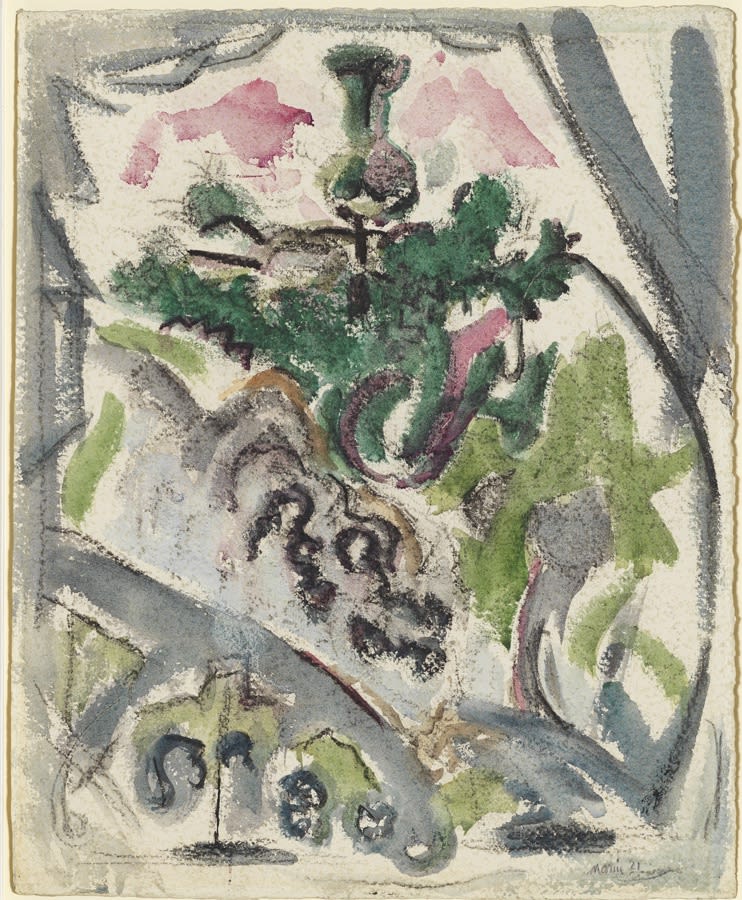
In 1914, John Marin visited Maine for the first time. He found the terrain vibrant and inspiring. “One fierce, relentless, cruel, beautiful, hellish and all the other ish’s place.” His first summer in the state was spent in the area around Casco Bay, including West Point and Small Point. He would return to the state throughout his life, often to Casco Bay where he found “some enchanted solitude like Prospero’s isle in The Tempest,” according to the critic Henry Tyrell. In 1914, Marin was, as he would remain, one of Stieglitz’s most commercially successful artists, so much so that he freely advanced Marin money for sales that he was certain would soon materialize. So immediate and profound was Marin’s love of the Casco Bay scenery that he quickly committed to it. Paul Rosenfeld reported that Marin asked Stieglitz for an advance on sales in 1914, saying that “$1200 would be adequate support for him and his wife for the year, departed for Maine only to return six weeks later to announce that he’d bought a very beautiful island with the money Stieglitz had given him, the drawback being that there was no water on it.” Marin coped with the plumbing-less hardships of his new “Marin Island” with the cheerful aplomb with which he greeted all adversity: “To go anywheres [sic.] I have to row, row, row. Pretty soon I expect the well will give out and I’ll then be even obliged to go for water and as I have to make water colors—to Hell with water for cooking, washing, and drinking” (Ruth E. Fine, John Marin, Washington, DC: National Gallery of Art, and New York: Abbeville Press, 1990, p. 166). Evidently, over the years, the rowing wore on him, his wife, and newborn son, as he gradually explored other mainland locations along the coast. In ensuing summers, Marin decamped for different areas of the state, beginning in 1918 at his favorite house at Small Point. He visited Stonington and Deer Island in the 1910s and 20s, his work ranging from relatively literal to highly abstracted. In 1932, he was back in Small Point. Although he had abandoned the notion of building on his island, Marin was evidently still lugging water around the mainland, writing Stieglitz in August from Sebasco, Maine: “Old Mistress—Maine—she makes you to—lug—lug—lug—she makes you to— pull—pull—pull—she makes you to—haul—haul—haul—and when she’s thrashed you aplenty, between those thrashings she’s lovely she smiles she’s beautiful with an unforgettable loveliness—an unforgettable beauty—Turns masculine— borders big and mighty—against—the big and mighty Atlantic—” (Dorothy Norman, ed., The Selected Writings of John Marin (New York: Pellegrini and Cudahy, 1949), p. 144).
On view at the Park Avenue Armory during the ADAA Art Show through March 1, and at 22 E80th Street through April 24th, 2020. The gallery is open to the public 9:30 to 5:30, Monday through Friday, and by appointment, at 22 East 80th Street, New York, NY, 10075. Visit www.msfineart.com or email info@msfineart.com, or call (212) 879-8815 for more information.

